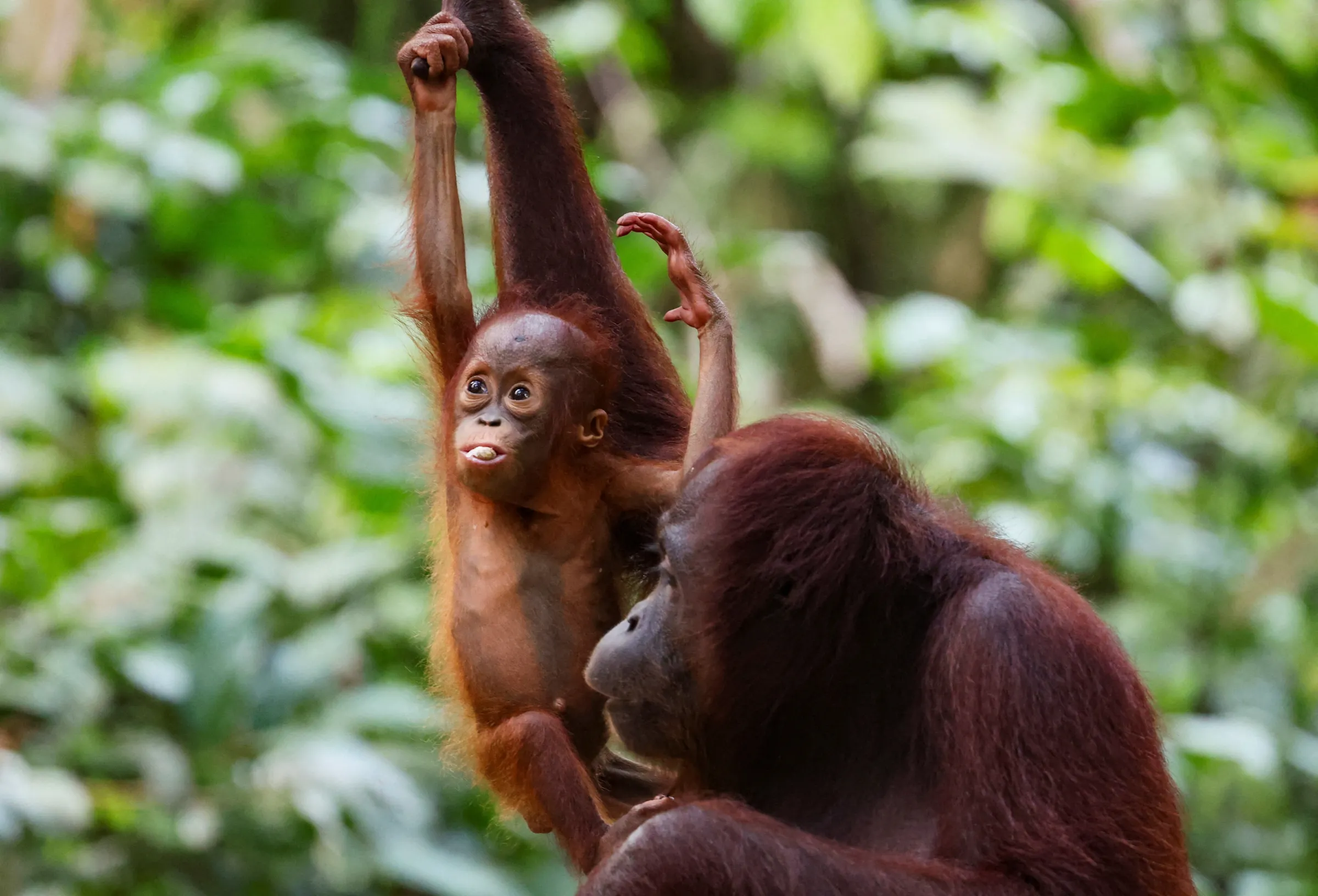How fast is biodiversity declining globally?

An infant Bornean orangutan is seen with its mother at a rehabilitation centre in Sepilok, Malaysia August 17, 2024. REUTERS/Hasnoor Hussain
What’s the context?
Decades of conservation efforts have not prevented dramatic biodiversity loss around the world
- Vertebrate populations fell three quarters since the 1970s
- Biodiversity decline steeper in Latin America and the Caribbean
- Governments continue to subsidize destructive economies
RIO DE JANEIRO - The natural environment is crucial to human life on the planet, from protection against diseases to the air we breathe, the water we drink and the food we eat.
But despite decades of conservation efforts, biodiversity is still in rapid decline.
Populations of vertebrates such as monkeys, fish, birds and giraffes declined 73% on average between 1970 and 2020, a new report from WWF shows.
This month, countries will meet in Cali, Colombia, for United Nations COP16 biodiversity talks, aiming to accelerate action to curb nature's destruction.
What is biodiversity and why does it matter?
"Biodiversity" refers to the many dimensions of life's variability, from genetic diversity between living beings to the differences between species and ecosystems, such as forests and grasslands.
Biodiversity sustains human life on earth, enabling ecosystems to remain productive and resilient, providing services such as pollination, water purification, stable climate and food.
As species disappear, roles such as flower pollination and nutrient cycling are no longer carried out. That in turn leads to further biodiversity loss and ecosystems become more vulnerable.
Biodiversity loss also damages the ability of ecosystems to absorb planet-heating carbon, which is vital to tackling the climate crisis.
How fast has biodiversity been declining?
Biodiversity loss is a result of problems such as the conversion of natural areas into developments or farms, the introduction of invasive species and climate change.
WWF's report measures biodiversity through the Living Planet Index (LPI), which tracks changes in the relative abundance of 34,836 populations from 5,495 species from land, rivers and lakes, and at sea.
Species from land ecosystems like forests and grasslands declined by 69% on average, while marine species declined by 56%, with intensively fished populations such as shark and rays falling more sharply.
Freshwater species, threatened by the fragmentation of their habitats by dams that block migration routes, suffered the strongest population decline at 85%.
Where has biodiversity been lost?
The pace of biodiversity loss differs across the globe.
The fastest rate of decline was in Latin America and the Caribbean, with a 95% decrease since 1970 due to rapid conversion of natural areas into farms, as well as climate change impacts, the WWF report said.
In 2023, more than 330 river dolphins died in just two Amazon lakes, the report said, with further deaths being recorded this year.
Species populations have declined by 76% on average in Africa, 60% on in Asia and the Pacific, 39% in North America and 35% in Europe and Central Asia - where much biodiversity loss had already taken place before 1970.
What are the risks ahead for nature and biodiversity?
Many crucial global ecosystems are reaching a tipping point from which biodiversity loss would accelerate.
Since 2023, the Amazon has suffered its worst drought ever recorded, with scientists warning that climate change and continuing conversion of natural areas into farmland could push the forest past a tipping point from which it would turn into a degraded ecosystem akin to a savannah.
Rising sea temperatures and ecosystem degradation will likely destroy between 70% and 90% of all coral reefs globally, even if temperatures are kept within 1.5 degrees Celsius (2.7 Fahrenheit), the WWF report says.
How can the world stop biodiversity loss?
In December 2022, countries agreed a global biodiversity framework at U.N. COP15 talks in Montreal to stem the decline of nature. At the upcoming COP16 meeting in Colombia, countries will be asked to speed up its implementation.
The agreement includes a target to protect 30% of the world's land and seas by 2030, rapidly increase finance towards nature protection and restoration, and reform government subsidies that are destroying nature.
Governments are spending more than $2.6 trillion each year on subsidies that harm the environment, such as fossil fuel and agricultural subsidies, according to a report last month by the Earth Track think tank.
(Reporting by Andre Cabette Fabio; Editing by Jack Graham and Jon Hemming.)
Context is powered by the Thomson Reuters Foundation Newsroom.
Our Standards: Thomson Reuters Trust Principles
Tags
- Climate policy
- Agriculture and farming
- Loss and damage
- Forests
- Biodiversity

















